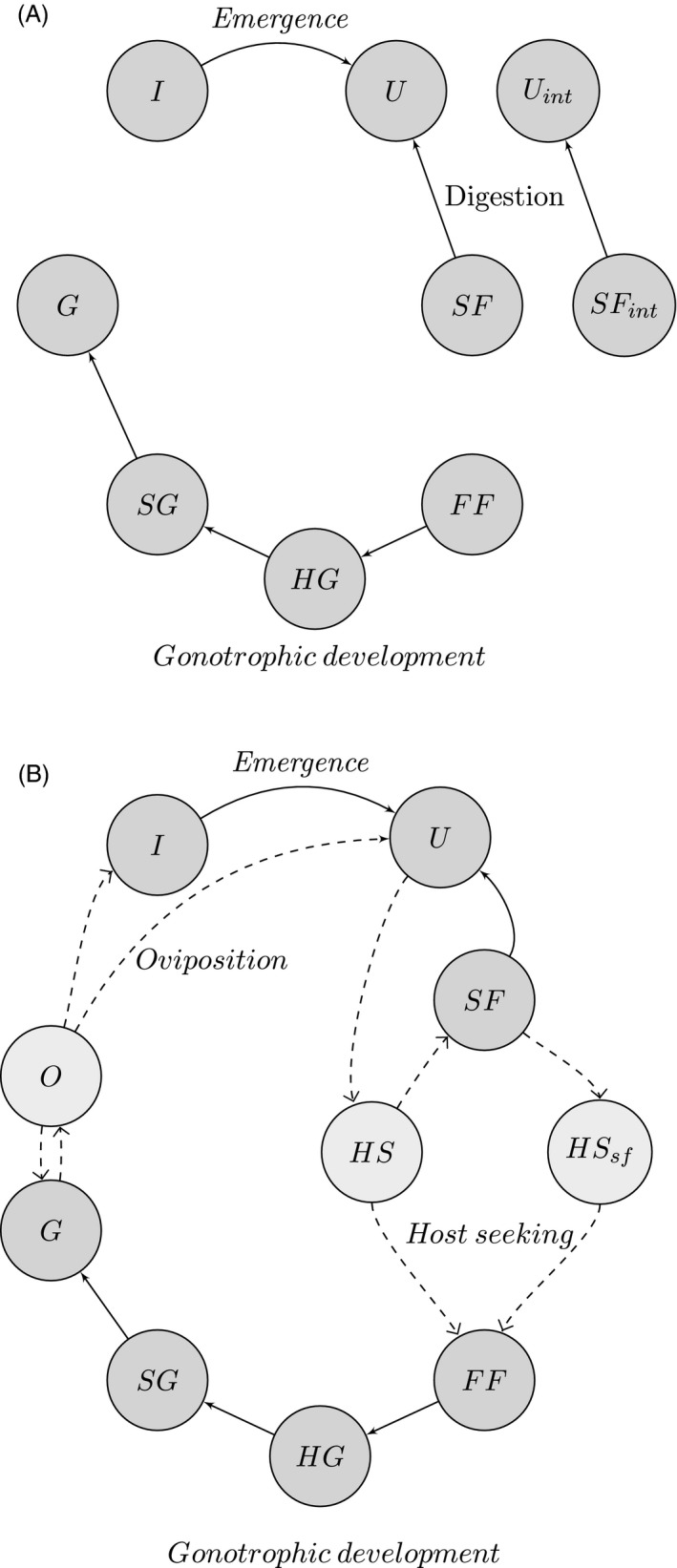Figure 1.

(A) A diagram of the mosquito population characterized by physiological state during daylight hours, where transitions between states correspond to physiological and larval development, but transitions due to foraging or oviposition do not occur (representing the transition matrix, M d). All states allow self‐transitions which are not shown. (B) The mosquito population characterized by physiological and behavioral states during nighttime hours. Dashed lines represent behavioral transitions, and solid lines represent physiological transitions (representing transition matrix, M i for 1 ≤ i ≤ 12). All states allow self‐transitions which are not shown.
